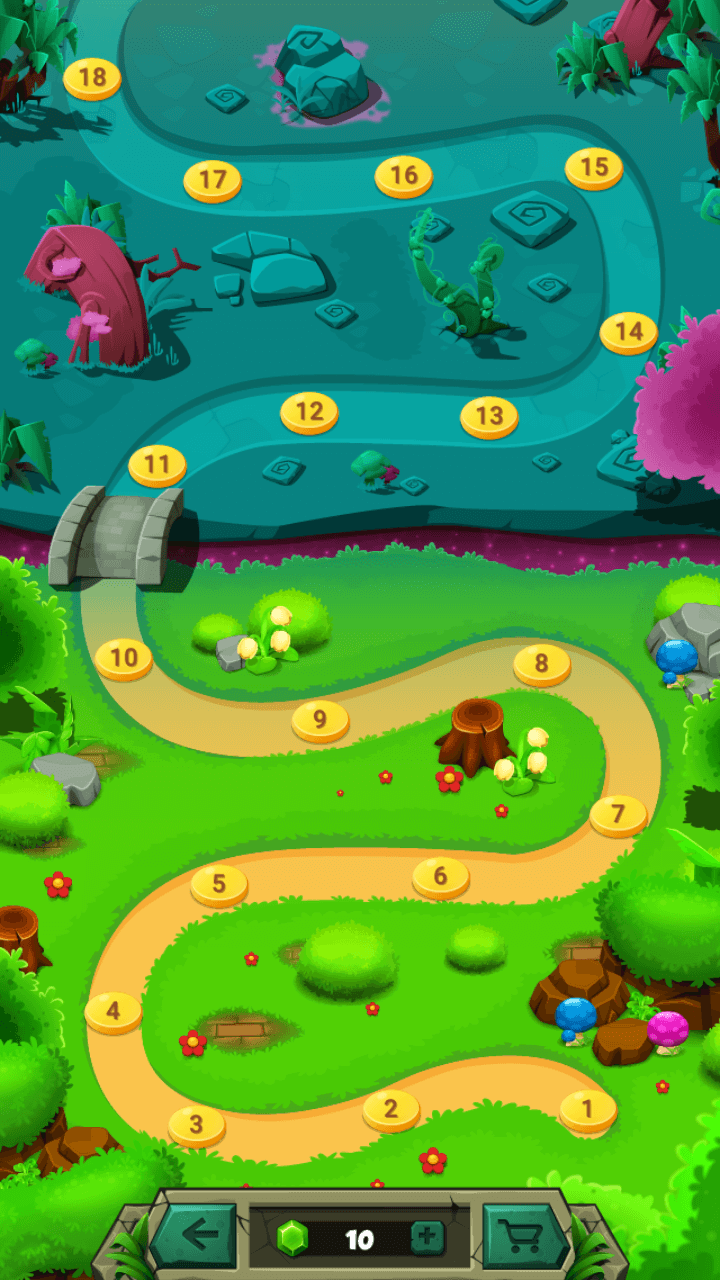Zuma Game Python
Crossfire is a free, open-source, cooperative multi-player RPG and adventure game.Since its initial release, Crossfire has grown to encompass over 150 monsters, 3000 areas to explore, an elaborate magic system, 13 races, 15 character classes, and many powerful artifacts scattered far and wide. The idea here is to use recursion. At each step, we plan to insert the remaining balls in the string hand to the string board.Now the question arises, in which position do we have to insert the ‘i’th character of the string hand?
- Related Questions & Answers
- Selected Reading
Let us consider about the Zuma Game. Suppose we have a row of balls on the table, these balls are colored as red(R), yellow(Y), blue(B), green(G), and white(W). We also have several balls with us.
Now, each time, we may choose a ball from our side, and insert it into the row. Then, if there is a group of 3 or more balls in the same color touching, remove them. Keep doing this until no more balls can be removed.
We have to find the minimal balls we have to insert to remove all the balls on the table. If we cannot remove all the balls, then return -1.
So if the input is like “WRRBBW”, and we have “RBW”, then the answer will be 3. We can add R after RR, (WRR[R]BBW), after removal, the sequence will be (WBBW), then add B, so (WBB[B]W), after removal it will be (WW), then add W, so the sequence will be (WW[W]). This will remove all balls.
To solve this, we will follow these steps −
- Define a function findMinStep(), this will take s, hand,
- s := s concatenate '#'
- Define an array v of size 26
- for initialize i := 0, when i < size of hand, update (increase i by 1), do −
- increase v[hand[i] - 'A'] by 1
- ret := call the function solve(s, v)
- return ret >= if INF is non zero then check with - 1 otherwise with ret
- Define a function solve(), this will take s, an array v,
- if s is same as '#', then −
- return 0
- ret := INF
- for initialize i := 0, j := 0, when j < size of s, update (increase j by 1), do −
- if s[i] is same as s[j], then −
- Ignore following part, skip to the next iteration
- need := 3 - (j - i)
- x := s[i]
- if need <= v[x - 'A'], then −
- v[x - 'A'] = v[x - 'A'] - need
- ret := minimum of ret and need + solve(substring of s from 0 to ith index) concatenate substring of s from j to size of s – j, v
- v[x - 'A'] = v[x - 'A'] + need
- i := j
- if s[i] is same as s[j], then −
- call the function process(s)
- if s is same as '#', then −
- return 0
- for initialize i := 0, j := 0, when j < size of s, update (increase j by 1), do −
- if s[i] is same as s[j], then −
- Ignore following part, skip to the next iteration
- need := 3 - (j - i)
- x := s[i]
- if need <= v[x - 'A'], then −
- v[x - 'A'] = v[x - 'A'] - need
- ret := minimum of ret and need + solve(substring of s from 0 to ith index) concatenate substring of s from j to size of s – j, v
- v[x - 'A'] = v[x - 'A'] + need
- i := j
- if s[i] is same as s[j], then −
- return ret
- Define a function process(), this will take s,
- for initialize i := 0, j := 0, when j < size of s, update (increase j by 1), do −
- if s[i] is same as s[j], then −
- Ignore following part, skip to the next iteration
- if (j - i) >= 3, then −
- delete i, j - i from s
- j := i - 1
- Otherwise
- i := j
- if s[i] is same as s[j], then −
- Call the findMinStep() with two strings to get the answer
Let us see the following implementation to get better understanding −
Zuma Game Python Code
Example
Input
Output
Zuma Game Python Online
© ROBERT SULLIVAN/AFP/Getty Images A Burmese python settling into its new home at the A.D. Barnes Park after being captured in a Florida backyard, 2005.Zuma Game Python Download
Two men in Malaysia were seen carting around the most unlikely of passengers—a massive snake reportedly weighing 440 pounds—as captured in a video that is now circulating online.

According to The International Business Times, the men found the snake over the weekend at a rubber plantation in the town of Kuala Krai. Fearing the python might harm residents in the area, they decided to bring it to authorities.
Datuk Abdul Kadir Abu Hashim, the Director-General of the Department of Wildlife and National Parks of Peninsular Malaysia (PERHILITAN), spoke on the incident in a statement to World of Buzz: 'They were worried that the large python could threaten the safety of the residents.' At that point, he added,'the python was then caught and taken on the motorcycle to be handed over to PERHILITAN.'
Finally, 'the batik python was then handed over to PERHILITAN at 2 p.m. on Sunday, before being placed temporarily in a Kuala Krai PERHILITAN cage.' Neither the humans nor the snake were reportedly harmed in the incident.
Now, only a few days later, a video of the enormous python mid-transit has gone viral. Though the clip's original source is unclear, it was posted to a community Facebook page Tuesday where it has received an outpouring of response.
In the 22-second clip, the two men are seen speeding through city streets on a motorcycle. The batik python is seen wrapped in massive coils around the driver's waist. As he drives, he flashes a peace sign to the camera and even goes hands-free for a brief moment. Meanwhile, the passenger behind him gives the snake a couple of friendly pats.

With tens of thousands of views on this post alone, the video has already garnered thousands of reactions and hundreds of comments.
While their massive size can be alarming, python sightings are not entirely uncommon. Last week, a Malaysian butcher was horrified to find an 11-foot python lurking under the table he was cleaning. The snake, most likely drawn to the area by the smell of raw meat being prepared by the butcher, appeared 'coiled' and ready to pounce. Authorities called to the scene were able to safely subdue the reptile and remove it from the scene.
Additionally, last month, it was reported that a whopping 16-foot python unexpectedly visited a Singapore coffee shop. A clip of the snake, thought to perhaps be a reticulated python, was shared widely on Facebook and featured the snake slithering through the shop's bathroom.